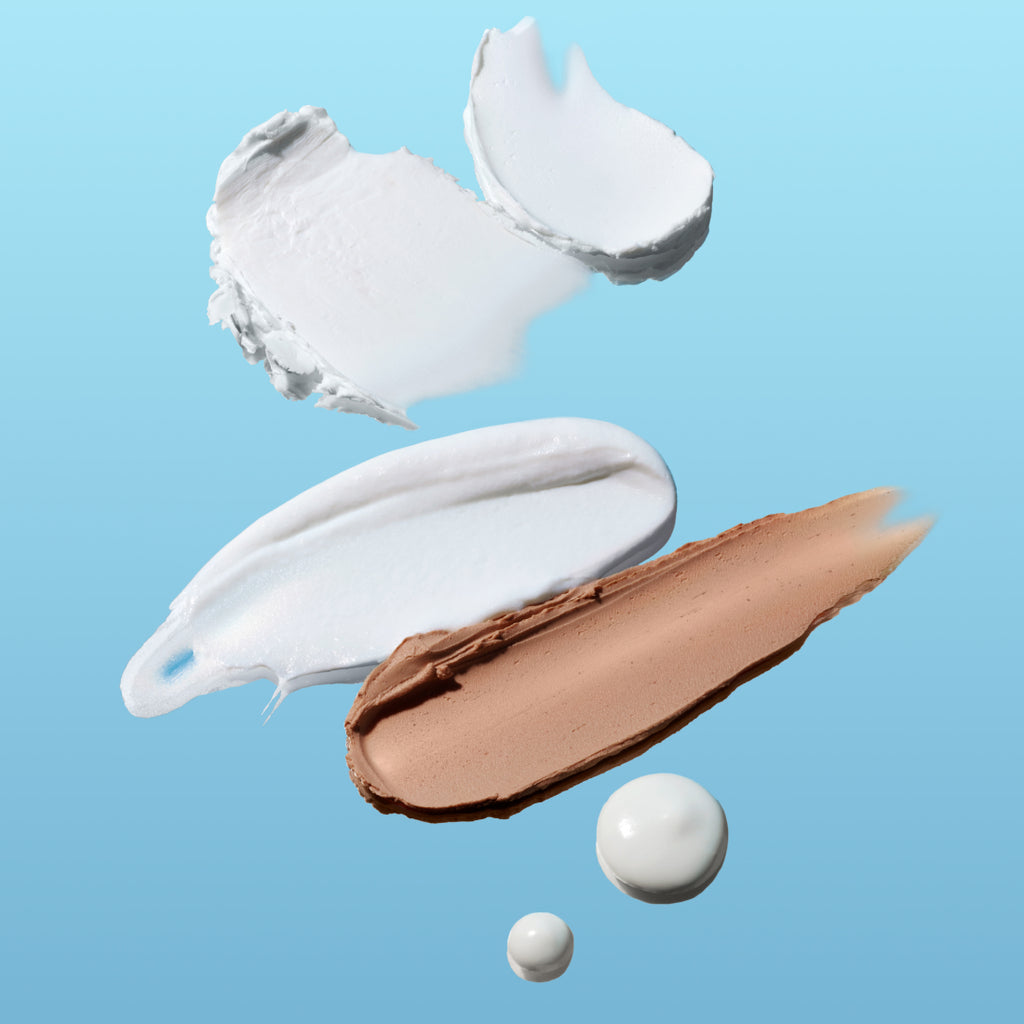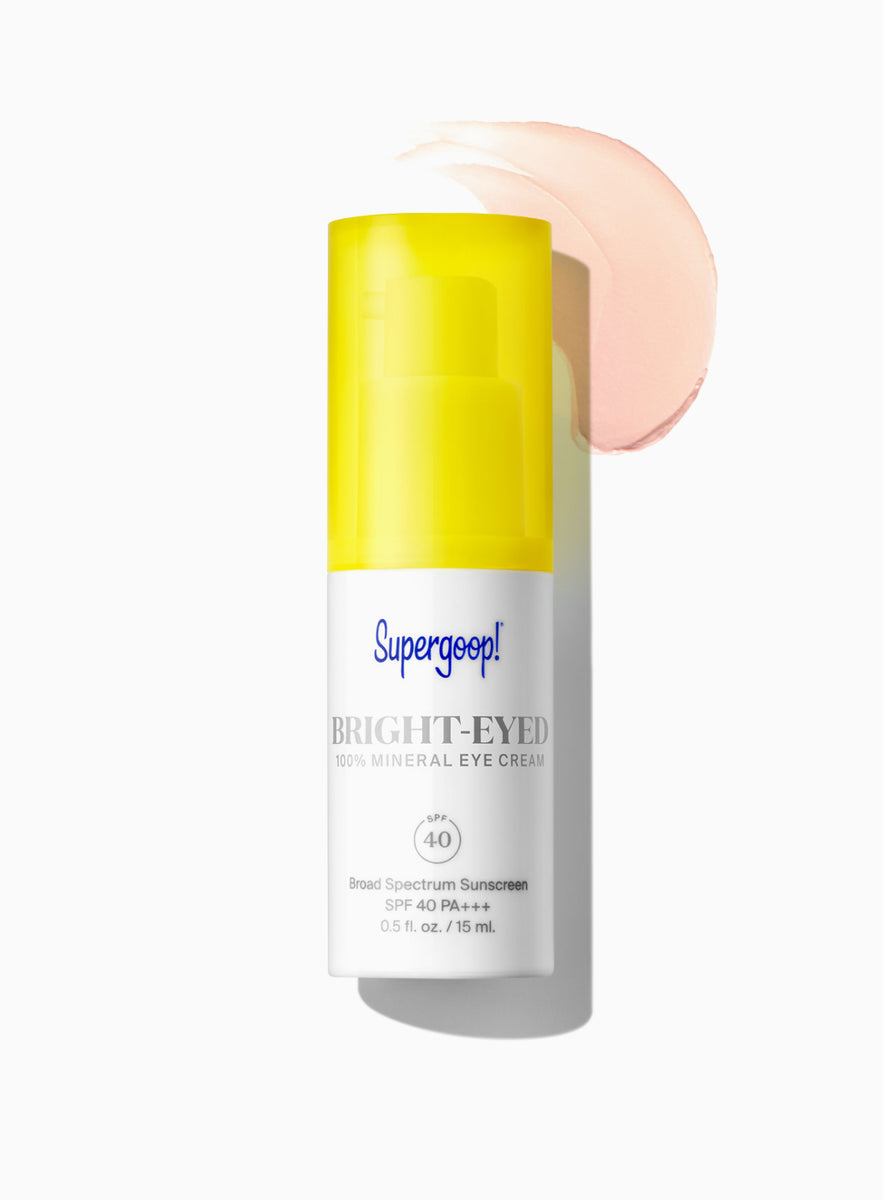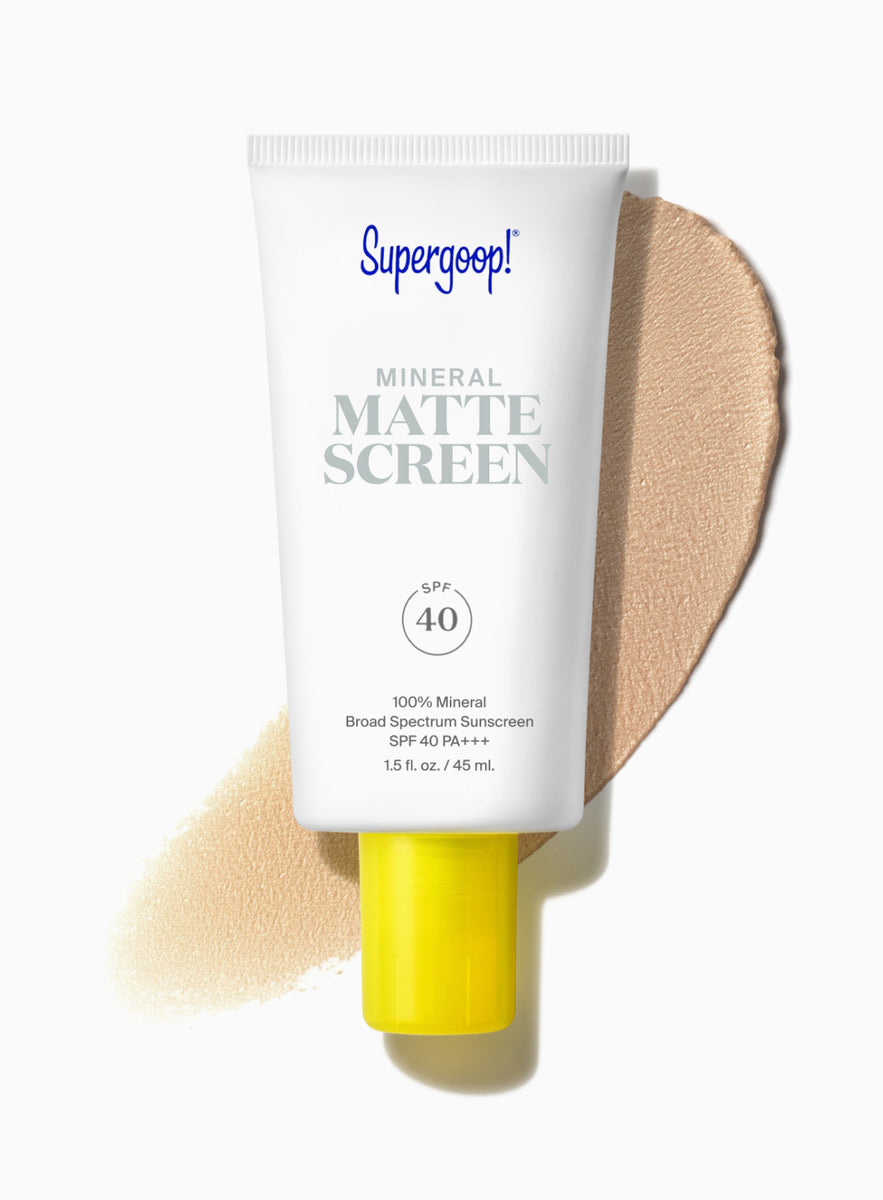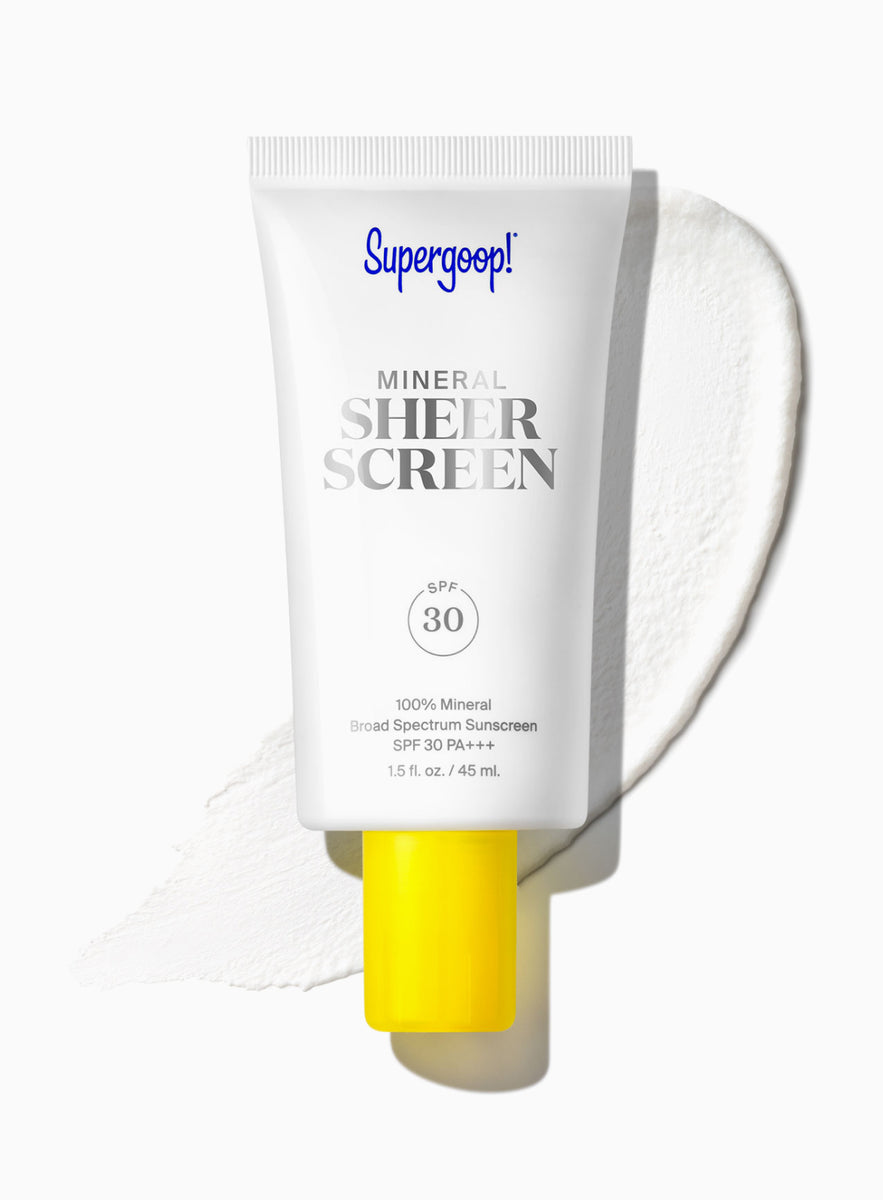There’s been a lot of talk about mineral sunscreen lately – how it works, what it looks like, how effective it is, etc. So, to mark the launch of our all-new Mineral Sheerscreen SPF 30, we’re doing some mineral mythbusting to give you the sheer truth about mineral SPF.
Mineral SPF is thick, white and pasty.
Busted: Mineral SPF can actually be sheer, hydrating and virtually weightless (thank you, science!).
Mineral SPF is going to sit on top of my skin and make it feel greasy.
Busted: Contrary to popular belief, mineral SPF will actually still absorb into the outermost layer of your skin. That being said, a well-made mineral SPF shouldn’t make your skin feel greasy, and if it does, that has to do with the other ingredients in the formula. (Sunscreen actives typically make up ~25% of the formula, and they don’t really have anything to do with texture.)
I keep reading about Clear or invisible Zinc… is that for real?
Busted: Absolutely not! This is pure marketing. Mineral SPF actives like zinc oxide are, by nature, dense, white particles and they can never, ever be invisible or clear.
All mineral SPF is good (all chemical SPF is bad)
Busted: Not all mineral SPF is inherently clean AND chemical SPF can be just as safe and effective as 100% mineral SPF can be. Put simply, the best SPF is always the one you love to wear.
Mineral is natural, so that’s why it’s better.
Busted: No SPF is “natural.” All SPF actives, mineral or chemical, are made in a lab, ensuring the products’ safety and efficacy.
Mineral sunscreen is more effective.
Busted: When made correctly, both clean chemical and mineral SPF are highly––and equally––efficacious when it comes to their protection claims.
Mineral deflects rays while chemical absorbs them.
Busted: Both mineral and chemical SPF protect your skin by absorbing the sun’s rays. Chemical SPF absorbs 100% of UV rays, while mineral SPF absorbs ~95% of UV rays and reflects back ~5%.
The higher the SPF number better. Why is this a 30 not a 40 or 50?
Busted: 30 allows you to be more inclusive when it comes to mineral SPF. 30 is also the minimum required daily by the AAD.




